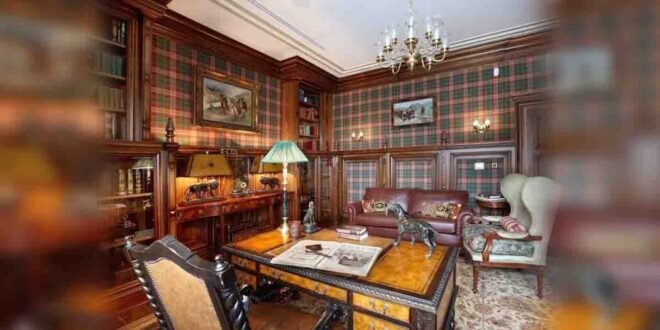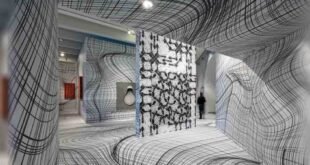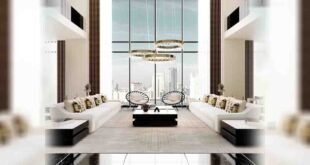Historical Roots
Evolution of Interior Styles
Classic interior styles have deep historical roots, often tracing back to specific eras or movements in design history. For instance, Victorian style emerged during the reign of Queen Victoria in the 19th century and was characterized by opulence, intricate details, and a fascination with ornamentation. On the other hand, Mid-Century Modern design gained prominence post-World War II, celebrating simplicity, functionality, and a connection with nature.
Influences and Inspirations
Exploring the societal, cultural, and technological influences that shaped these styles can be fascinating. Victorian interiors, for instance, were influenced by the Industrial Revolution and the proliferation of ornate craftsmanship. At the same time, Mid-Century Modern drew inspiration from post-war optimism, embracing innovative materials and minimalist designs.
Key Elements
Design Characteristics
Breaking down the essential features of each style provides a deeper understanding of their distinctiveness. Victorian interiors are synonymous with intricate woodwork, elaborate patterns, heavy drapery, and a penchant for dark, rich colors. In contrast, Mid-Century Modern favors clean lines, organic shapes, simplicity, and an emphasis on functionality over excessive ornamentation.
Architectural and Decorative Elements
From the high ceilings and detailed molding in Victorian homes to the iconic furniture pieces like Eames chairs and sleek, tapered legs of Mid-Century Modern, each style boasts unique architectural and decorative elements that define its visual language.
Timeless Appeal
Adaptability Across Eras
One remarkable aspect of these classic styles is their ability to transcend time. Despite their historical origins, Victorian and Mid-Century Modern styles have proven adaptable, allowing for reinterpretation and integration into contemporary settings.
Enduring Aesthetic Charm
The enduring charm of these styles lies in their ability to evoke emotions and create atmospheres that resonate with people across generations. The timeless elegance of Victorian opulence or the understated sophistication of Mid-Century Modern simplicity continues to captivate and inspire.
Color Palette and Textures
Victorian Color Palette and Textures
Victorian interiors often feature deep, sumptuous colors like burgundy, forest green, and royal blue, creating a sense of luxury. Textures play a vital role, with rich fabrics such as velvet, brocade, and damask adding to the lavishness.
Mid-Century Modern Color Palette and Textures
Conversely, mid-century modern design leans towards neutral tones like beige, white, and shades of grey, fostering a sense of openness and airiness. Natural textures such as wood, leather, and fibreglass emphasise a connection to nature.
Furniture and Accents
Victorian Furniture and Accents
Victorian furniture is often ornate, with pieces featuring intricate carvings, claw feet, and tufted upholstery. Elaborate chandeliers, decorative mirrors, and tapestries are familiar accents.
Mid-Century Modern Furniture and Accents
In contrast, Mid-Century Modern furniture showcases sleek, functional designs with clean lines and geometric shapes. Iconic pieces like the Barcelona or Egg chair remain highly sought after. Minimalist artwork, abstract sculptures, and statement lighting are typical accents.
Creating Fusion
Contemporary Blends of Classic Interior Styles
Contemporary interior design often involves fusing classic styles. Designers skillfully blend elements from different eras, creating spaces that marry the elegance of the past with the functionality of the present. For instance, combining Victorian opulence with minimalist Mid-Century Modern accents can create a sophisticated yet comfortable ambience.
Harmonizing Contrasting Elements
Finding a balance between contrasting styles requires a thoughtful approach. Integrating ornate Victorian furniture with the clean lines of Mid-Century Modern pieces demands a keen eye for detail and a sensitivity to coherence.
Practicality and Comfort
Functionality in Design
Victorian and Mid-Century Modern styles prioritize functionality despite their ornate or minimalist appearances. Victorian furniture was designed for comfort and durability, while Mid-Century Modern pieces were often conceived with practical living spaces in mind.
Comfort as a Priority
Creating a comfortable living environment has always been central to classic interior styles. Plush seating, ergonomic designs, and attention to room layout contribute to ease and comfort within these spaces.
Influence on Modern Design
Revival and Resurgence
The influence of these classic styles on modern design trends remains significant. Revival of patterns, reimagined furniture designs, and a general resurgence of interest in these aesthetics speak volumes about their lasting impact.
Contemporary Interpretations
Modern designers often pay homage to these styles by reinterpreting their core elements. Contemporary spaces may feature Victorian-inspired wallpaper patterns or Mid-Century Modern furniture revamped with modern materials.
Personalizing Classic Styles
Incorporating Elements at Home
Individuals seeking to infuse their spaces with classic style can start by selecting elements that resonate with them. This could involve using color schemes reminiscent of a particular era or integrating signature furniture pieces as focal points.
Blending Personal Taste
Customization and personalization are key when incorporating classic styles into one’s home. Finding a balance between personal taste and the essence of these styles allows for unique, tailored interiors.
Preserving Legacy
Importance of Preservation Efforts
Preserving these classic styles’ cultural and historical significance is crucial. Restoration projects, educational initiatives, and museums play vital roles in ensuring these design legacies endure for future generations.

Frequently Asked Questions (FAQs)
What are classic interior styles?
Classic interior styles refer to design aesthetics that have stood the test of time, often associated with specific historical periods or design movements. These styles, like Victorian or Mid-Century Modern, have enduring appeal and distinctive characteristics.
What defines Victorian interior style?
Victorian interiors are characterized by ornate detailing, rich colors, intricate patterns, and a penchant for luxurious furniture. This style emerged during Queen Victoria’s reign in the 19th century, showcasing opulence and elegance.
What are the critical elements of mid-century modern design?
Mid-Century Modern design emphasizes simplicity, clean lines, and functionality. It features organic shapes, minimal ornamentation, and a focus on natural materials. Iconic furniture pieces like the Eames chair exemplify this style.
How do classic interior styles remain relevant in modern times? Despite their historical origins, classic interior styles endure due to their adaptability. Designers often reinterpret these styles, integrating their elements into contemporary spaces and showcasing their timeless appeal.
Can I incorporate classic interior styles in a modern home?
Yes, classic styles can be integrated into modern homes. This fusion involves selectively incorporating elements such as color schemes, furniture pieces, or architectural details to evoke the essence of a particular style while maintaining a contemporary feel.
Are classic interior styles practical for everyday living?
Classic styles prioritize both aesthetics and functionality. Victorian furniture, for instance, was designed for comfort and durability, while Mid-Century Modern pieces focused on practicality without compromising style.
How can I personalize classic interior styles in my home?
Personalizing classic styles involves selecting elements that resonate with your taste and integrating them thoughtfully. This could include choosing specific furniture pieces, color palettes, or decorative accents inspired by a particular era.
What influence do classic interior styles have on modern design trends?
Classic styles continue to influence modern design trends through revived patterns, reinterpreted furniture designs, and an ongoing appreciation for their aesthetics. Designers often draw inspiration from these styles to create contemporary spaces.
Why is it essential to preserve classic interior styles?
Preserving classic styles is crucial for maintaining our cultural heritage and understanding design evolution. Restoration efforts, educational initiatives, and preservation of historical spaces ensure these design legacies endure for future generations.
How can I learn more about classic interior styles?
Exploring design history books, visiting museums with period-specific exhibits, engaging with interior design publications, or seeking guidance from design professionals can provide valuable insights into classic interior styles and their significance.
 Nt Design
Nt Design



